Abstract
1. Derivatives of arachidonic acid other than prostaglandin are pyrogenic, the likely candidates being the prostaglandin endoperoxides and/or the thromboxanes. 2. Intraventricular microinjections in rabbits of a stable analogue of prostaglandin endoperoxide resulted in dose-dependent increases of rectal temperature. The pyrexia was delayed in onset; no significant change in body temperature occurred for at least an hour. 3. The pyrexia was unaltered by simultaneous injection of the potent prostaglandin synthetase inhibitor indomethacin. 4. We suggest that both prostaglandins and prostaglandin endoperoxides may be implicated in fever.
Full text
PDF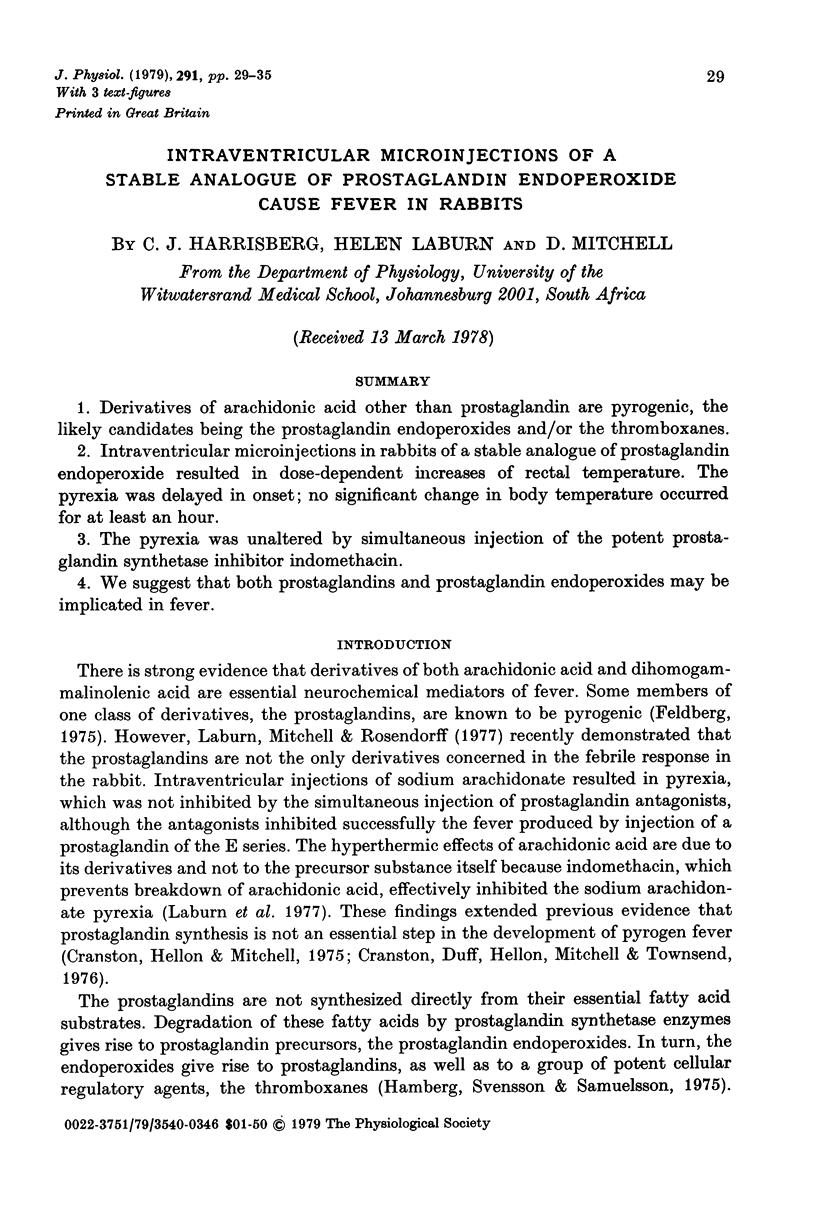
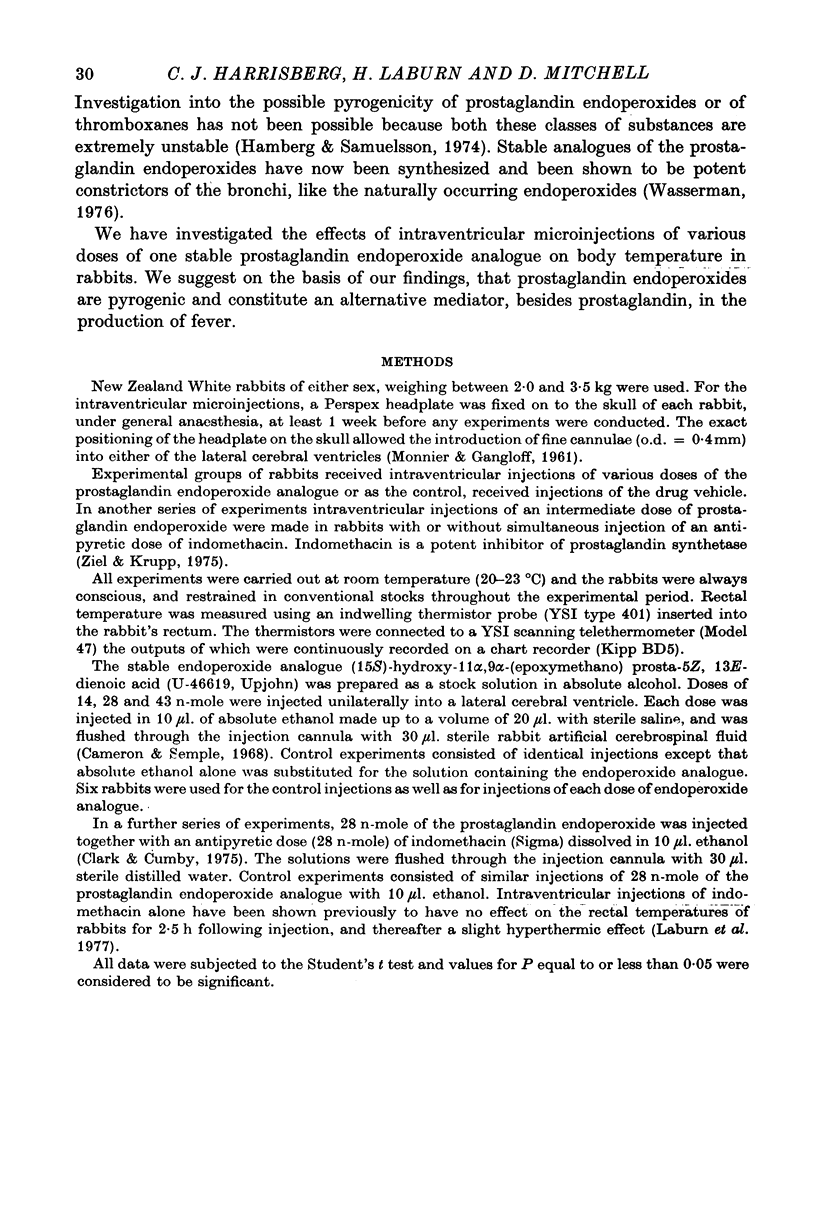
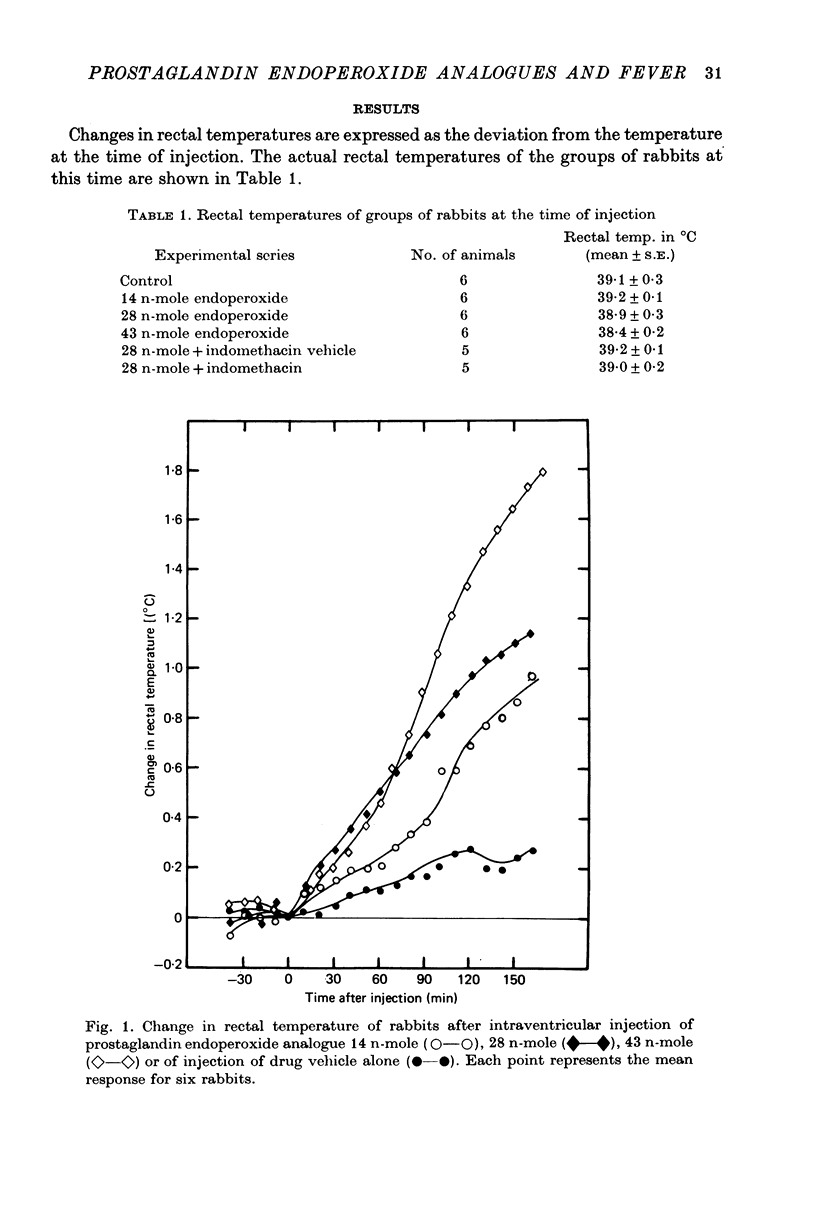
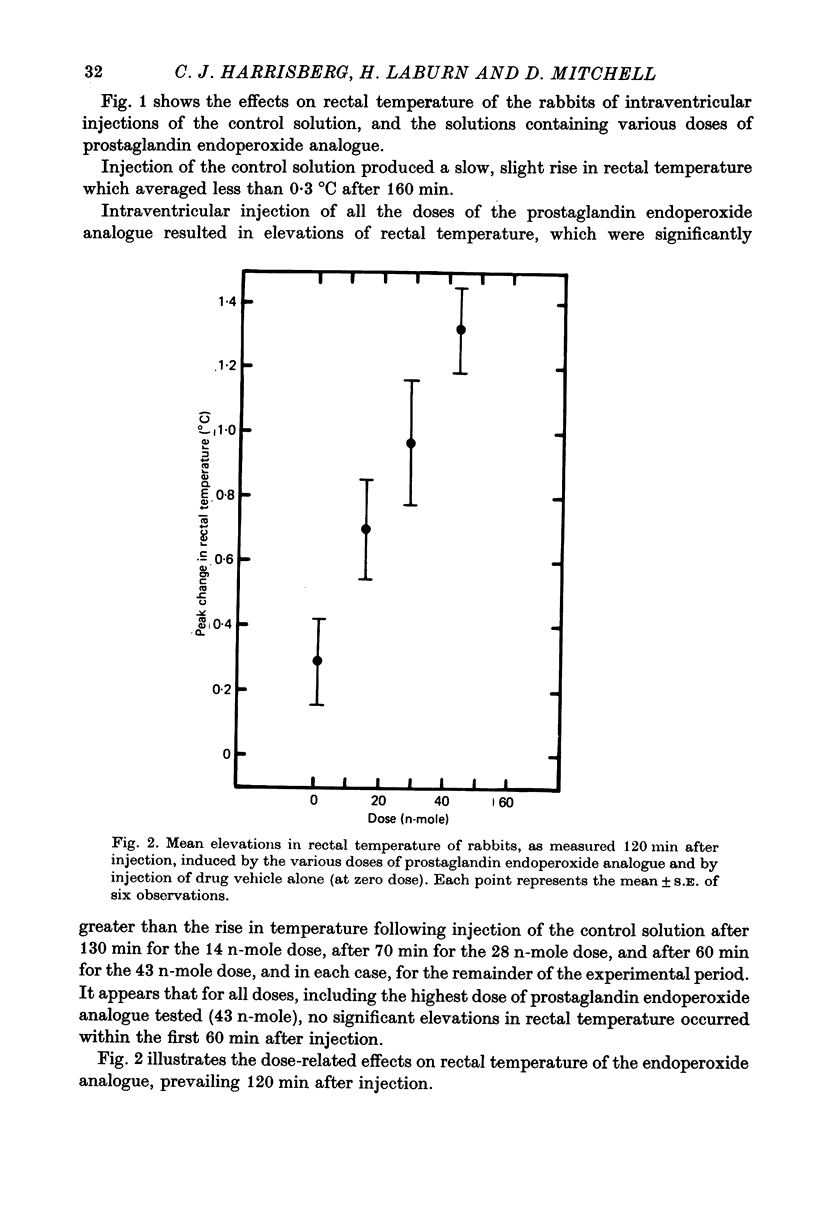
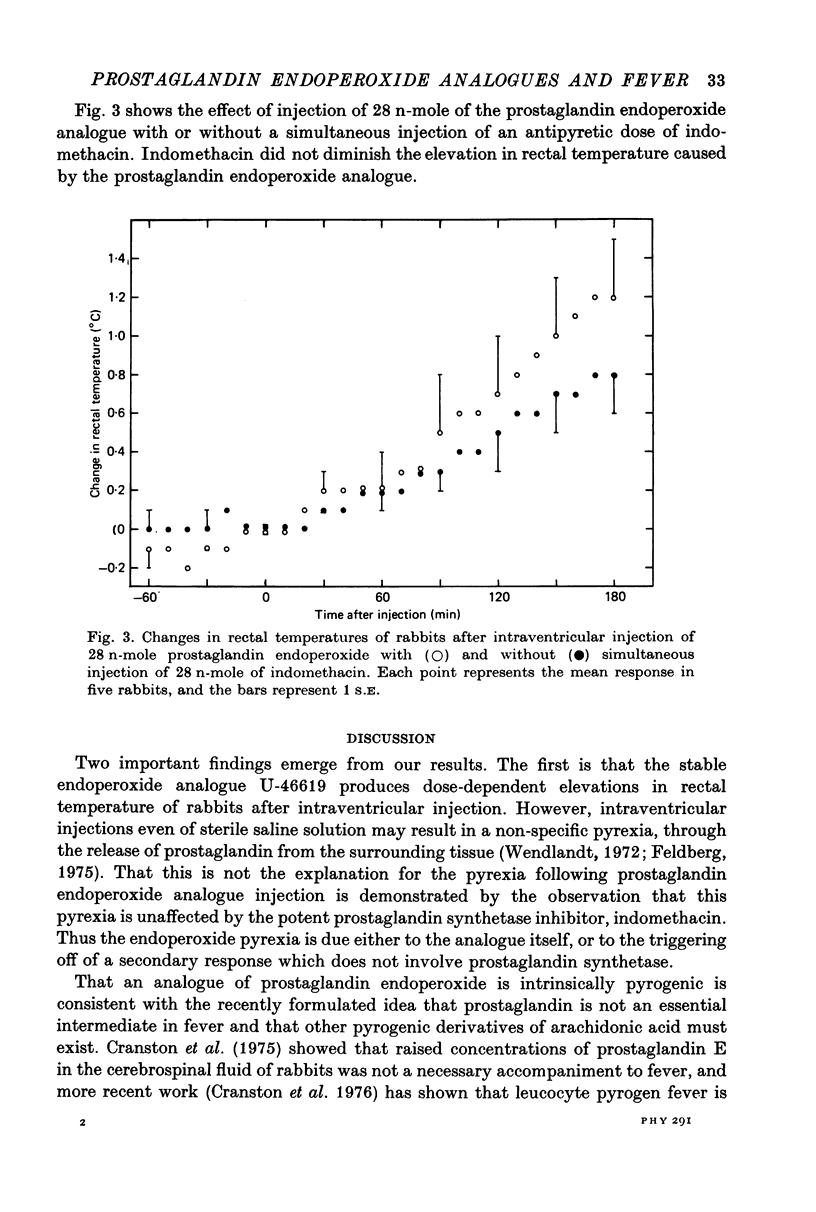
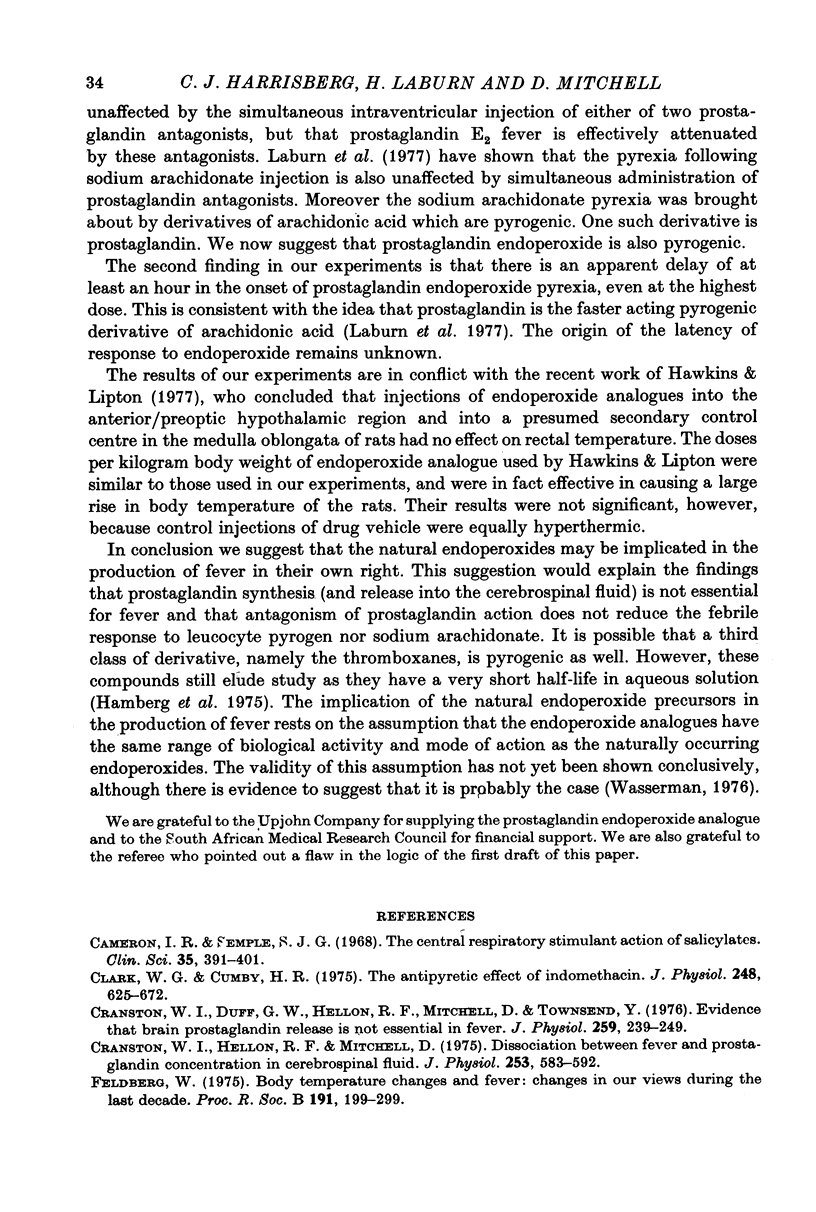
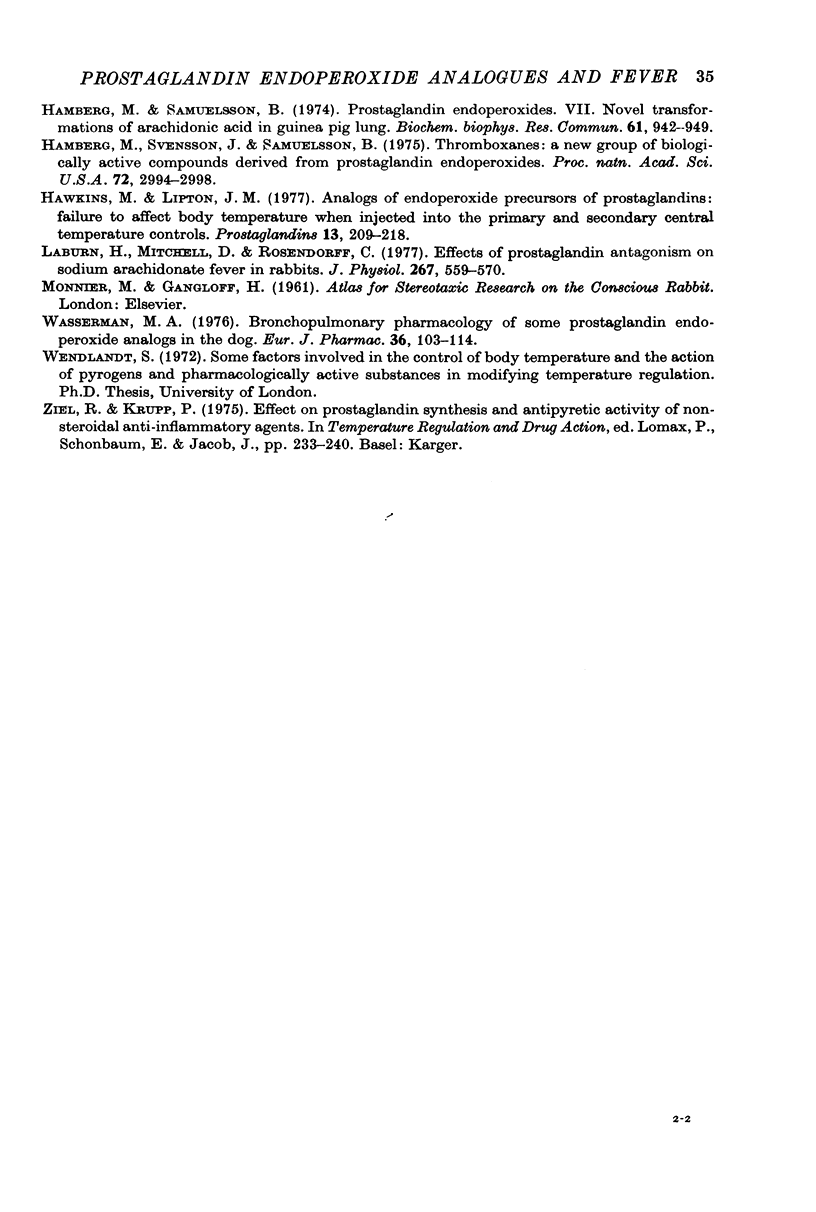
Selected References
These references are in PubMed. This may not be the complete list of references from this article.
- Cameron I. R., Semple S. J. The central respiratory stimulant action of salicylates. Clin Sci. 1968 Oct;35(2):391–401. [PubMed] [Google Scholar]
- Clark W. G., Cumby H. R. The antipyretic effect of indomethacin. J Physiol. 1975 Jul;248(3):625–638. doi: 10.1113/jphysiol.1975.sp010992. [DOI] [PMC free article] [PubMed] [Google Scholar]
- Cranston W. I., Duff G. W., Hellon R. F., Mitchell D., Townsend Y. Evidence that brain prostaglandin synthesis is not essential in fever. J Physiol. 1976 Jul;259(1):239–249. doi: 10.1113/jphysiol.1976.sp011464. [DOI] [PMC free article] [PubMed] [Google Scholar]
- Cranston W. I., Hellon R. F., Mitchell D. A dissociation between fever and prostaglandin concentration in cerebrospinal fluid. J Physiol. 1975 Dec;253(2):583–592. doi: 10.1113/jphysiol.1975.sp011208. [DOI] [PMC free article] [PubMed] [Google Scholar]
- Feldberg W. The Ferrier Lecture, 1974. Body temperature and fever: changes in our views during the last decade. Proc R Soc Lond B Biol Sci. 1975 Nov 18;191(1103):199–229. doi: 10.1098/rspb.1975.0124. [DOI] [PubMed] [Google Scholar]
- Hamberg M., Samuelsson B. Prostaglandin endoperoxides. VII. Novel transformations of arachidonic acid in guinea pig lung. Biochem Biophys Res Commun. 1974 Dec 11;61(3):942–949. doi: 10.1016/0006-291x(74)90246-0. [DOI] [PubMed] [Google Scholar]
- Hamberg M., Svensson J., Samuelsson B. Thromboxanes: a new group of biologically active compounds derived from prostaglandin endoperoxides. Proc Natl Acad Sci U S A. 1975 Aug;72(8):2994–2998. doi: 10.1073/pnas.72.8.2994. [DOI] [PMC free article] [PubMed] [Google Scholar]
- Hawkins M., Lipton J. M. Analogs of endoperoxide precursors of prostaglandins: failure to affect body temperature when injected into primary and secondary central temperature controls. Prostaglandins. 1977 Feb;13(2):209–218. doi: 10.1016/0090-6980(77)90002-8. [DOI] [PubMed] [Google Scholar]
- Laburn H., Mitchell D., Rosendorff C. Effects of prostaglandin antagonism on sodium arachidonate fever in rabbits. J Physiol. 1977 May;267(2):559–570. doi: 10.1113/jphysiol.1977.sp011826. [DOI] [PMC free article] [PubMed] [Google Scholar]
- Wasserman M. A. Bronchopulmonary pharmacology of some prostaglandin endoperoxide analogs in the dog. Eur J Pharmacol. 1976 Mar;36(1):103–114. doi: 10.1016/0014-2999(76)90262-4. [DOI] [PubMed] [Google Scholar]


